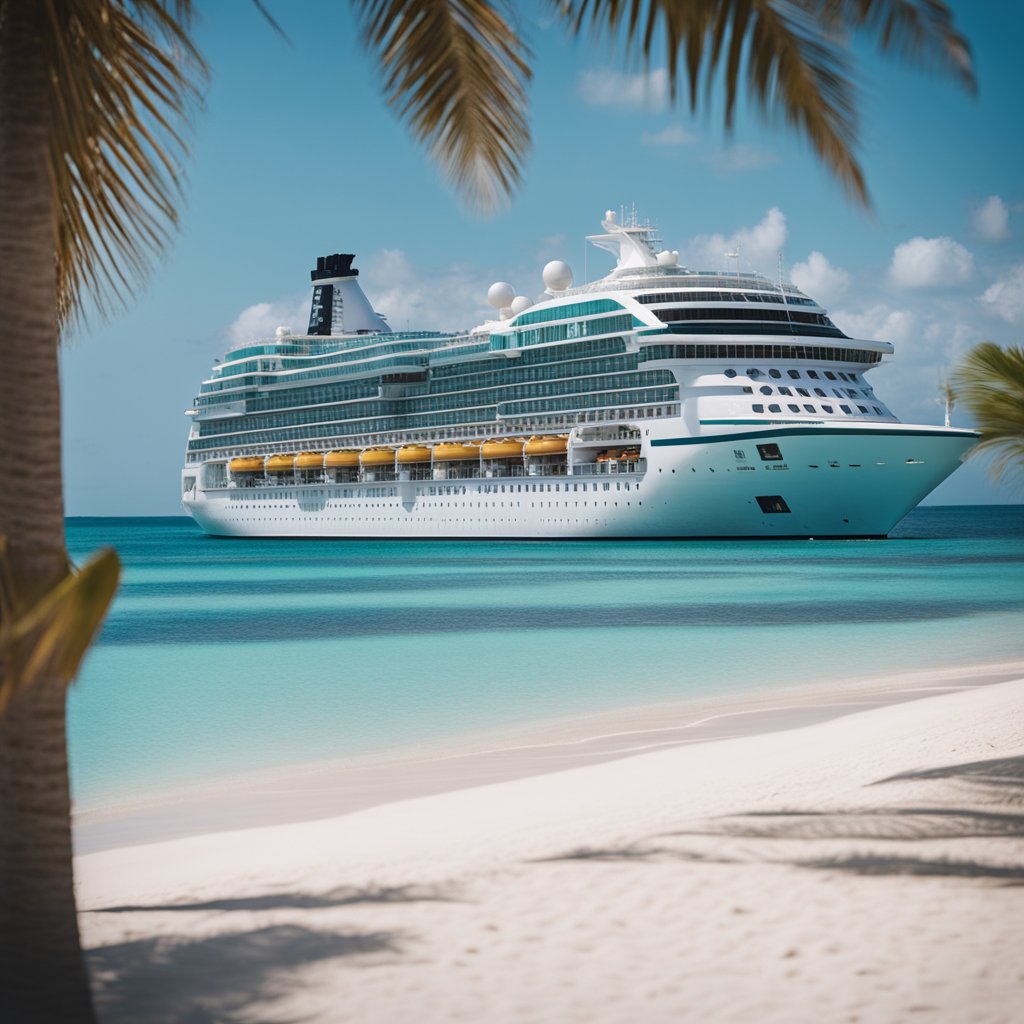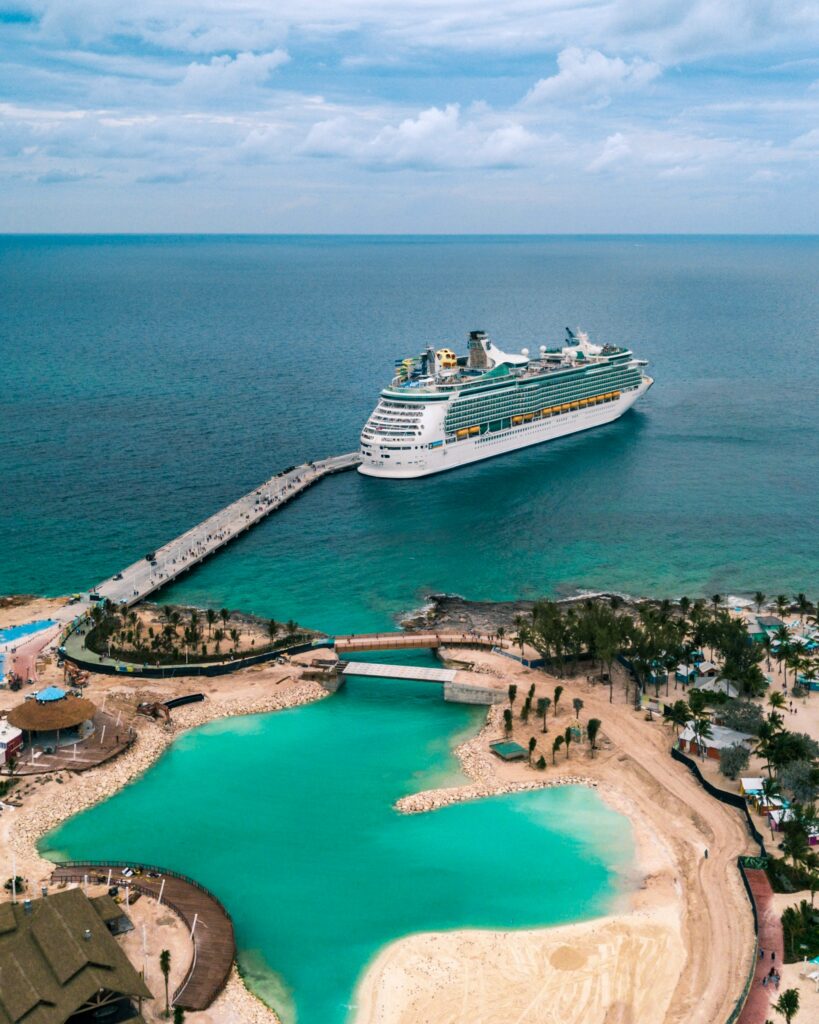When planning a cruise, choosing the right cruise line is crucial to ensuring an enjoyable experience. Each cruise line offers unique features, amenities, and itineraries that cater to different types of travelers. Understanding the key differences among cruise lines can significantly enhance the decision-making process.
Different cruise lines cater to various preferences, from family-friendly options to luxury experiences. Factors such as onboard activities, dining styles, and destination offerings can heavily influence satisfaction. By comparing these elements, travelers can identify which cruise line aligns best with their expectations and budget.
This guide will examine several prominent cruise lines, highlighting their distinct advantages and target audiences. Whether one seeks adventure, relaxation, or cultural exploration, knowing what each cruise line provides will help in selecting the ideal voyage.
History of Cruise Lines
The history of cruise lines reflects a journey from transportation to leisure-focused travel. Key milestones include innovative pioneers and the evolution of ship design, which have shaped the modern cruise experience.
Pioneers of Cruising
Cruising began as a mode of transportation in the 19th century. The Cunard Line, established in 1840, was among the first to offer transatlantic voyages on an ocean liner. The RMS Britannia was a significant ship in this regard, known for its speed and luxury.
In the early 20th century, the Italian Line and Hamburg America Line began offering cruises to a more affluent clientele. These lines introduced onboard amenities like dining and entertainment, aligning the cruise experience with leisure.
The post-World War II era marked a turning point. The advent of larger ships and inclusive pricing made cruising accessible to a broader audience, setting the foundation for today’s cruise industry.
Evolution of Cruise Ships
The design and functionality of cruise ships have drastically changed over the decades. Initially, ships like the Queen Mary focused on speed and comfort for long voyages.
By the 1970s, the advent of purpose-built cruise ships began. The Carnival Tropicale launched in 1982, showcasing innovations such as self-service buffets and elaborate entertainment options. This era marked the shift towards the modern cruise experience.
Today’s cruise ships are floating resorts, featuring amenities like water parks, theaters, and fine dining. Lines such as Royal Caribbean and Norwegian Cruise Line lead in this evolution, continually incorporating new technologies and designs to enhance guest experiences. This transformation has made cruising one of the fastest-growing sectors in the travel industry.
Types of Cruise Lines
Cruise lines cater to various preferences and budgets. The three primary categories include mainstream cruise lines, luxury cruise lines, and expedition and specialty cruises. Each type offers unique experiences tailored to different travelers.
Mainstream Cruise Lines
Mainstream cruise lines appeal to a wide audience, offering affordable vacations with numerous onboard activities. Notable lines include Carnival, Royal Caribbean, and Norwegian.
Families often choose these lines for their diverse entertainment options, which may include water parks, theaters, and kids’ clubs. Dining options are abundant, ranging from buffets to specialty restaurants.
Destinations typically include popular ports in the Caribbean, Europe, and Alaska. These cruises provide a familiar, casual atmosphere, making them ideal for first-time cruisers.
Luxury Cruise Lines
Luxury cruise lines focus on providing upscale experiences with personalized service. Companies like Crystal Cruises, Seabourn, and Regent Seven Seas exemplify this category.
Guests can expect exquisite dining, spacious accommodations, and meticulous attention to detail. Amenities may include spa services, fine wines, and tailored shore excursions.
Itineraries are often less conventional, focusing on exclusive ports and unique experiences. Luxury cruises typically attract travelers looking for the highest quality in service and comfort.
Expedition and Specialty Cruises
Expedition and specialty cruises are designed for adventure seekers and niche interests. Companies such as Lindblad Expeditions and Hurtigruten emphasize exploration and unique itineraries.
These cruises travel to remote and less-visited destinations, including Antarctica and the Galapagos Islands. Activities often involve nature-focused excursions, such as kayaking, hiking, and wildlife viewing.
Passengers are usually offered educational opportunities led by experts in the field. This category attracts those who prioritize adventure and cultural enrichment over traditional luxury or mainstream amenities.
Cruise Destinations
Cruise destinations offer travelers a chance to explore diverse regions, each with unique attractions and experiences. The Caribbean, Mediterranean, and exotic locations stand out for their offerings, catering to various interests and preferences.
Caribbean Cruises

Caribbean cruises are famous for their stunning beaches, crystal-clear waters, and vibrant cultures. Popular ports include Cozumel, Nassau, and St. Thomas.
Travelers can participate in activities like snorkeling, scuba diving, and exploring lush tropical forests. Each destination showcases local cuisine, music, and art.
Cruise lines often offer themed excursions, including culinary tours and historical site visits, enhancing the experience. Perfect for relaxation and adventure, Caribbean cruises attract millions annually.
Mediterranean Cruises
Mediterranean cruises provide rich history and diverse landscapes. Ports such as Barcelona, Rome, and Athens are key stops, allowing passengers to experience iconic landmarks.
Travelers can visit ancient ruins, enjoy local vineyards, or stroll through charming coastal towns. Each destination offers a mix of modern and historic attractions.
Many cruise lines offer themed itineraries focusing on art, food, or culture. This variety appeals to those seeking both relaxation and cultural immersion.
Exotic Destinations
Exotic cruise destinations include remote locales such as Bali, Tahiti, and the Galápagos Islands. These cruises attract those interested in unique wildlife and pristine natural beauty.
Cruisers can expect immersive experiences, such as guided nature hikes, cultural interactions, and water sports. Each destination highlights the local ecosystem and traditions.
Many lines specialize in small-ship experiences, allowing for more personalized excursions. This approach connects travelers deeply with the destinations.
Onboard Amenities
Cruise lines offer a wide variety of amenities that enhance the passenger experience. Key features include diverse dining options, engaging entertainment, and various accommodation types tailored to meet guest preferences.
Dining Options
Dining on a cruise ship ranges from casual eateries to specialty restaurants. Many cruise lines feature multiple dining venues, offering everything from international cuisines to regional specialties.
- Main Dining Rooms often provide multi-course meals with a rotating menu.
- Buffet-style Restaurants allow for casual dining with a wide variety of choices.
- Specialty Restaurants, available on some lines, may include steakhouses, Italian bistros, and sushi bars, often requiring reservations and a cover charge.
Some cruise lines focus on gourmet experiences, offering chef-led cooking classes or wine pairings. Options cater to various dietary preferences, ensuring every guest finds suitable meals.
Entertainment and Activities
Entertainment options aboard cruise ships cater to various interests and age groups. Passengers can choose from live performances, movie screenings, and themed parties, all designed to keep them engaged.
- Theater Shows often feature Broadway-style performances and musical concerts.
- Outdoor Activities can include swimming pools, rock climbing walls, and sports courts.
- Workshops and Classes are frequently available, including art, dance, or cooking sessions, adding an interactive element.
Cruise ships also provide dedicated spaces for children and teens, featuring age-appropriate activities. This ensures that guests of all ages are entertained throughout their journey.
Accommodation Types
Accommodation options on cruise lines vary widely, from economical interior cabins to luxurious suites. Choices affect the experience and budget significantly.
- Interior Cabins are typically the most affordable, lacking windows but providing essential amenities.
- Oceanview Cabins offer portholes or windows, allowing for natural light and sea views.
- Balcony Cabins provide private outdoor spaces, enhancing the experience with fresh air and scenic views.
Several cruise lines also offer Suites, which include additional living space, premium furnishings, and exclusive services. Amenities may include priority boarding and concierge services, catering to those seeking a premium experience.
Pricing and Value Comparisons
Understanding the pricing structures across various cruise lines is essential for travelers seeking the best value for their money. Different lines offer varying fare structures, inclusions, and overall experiences.
Budgeting for a Cruise
Budgeting for a cruise involves more than just the ticket price. Travelers need to consider additional costs such as gratuities, excursions, specialty dining, and potentially higher prices for drinks and internet access.
It’s important to set a clear budget that includes these elements. A table can help:
| Expense | Estimated Cost |
|---|---|
| Cruise Fare | $700 – $2,500+ |
| Gratuities | $12 – $15 per day |
| Excursions | $50 – $200 each |
| Specialty Dining | $20 – $50 per person |
Potential hidden fees can significantly impact total costs, so assessing the entire financial picture is crucial.

Inclusions and Exclusions in Fare
Cruise fares can vary widely based on what is included. Some lines offer all-inclusive packages, including meals, drinks, and activities. Others may have base prices that seem low but add extra fees for essentials.
Common inclusions may feature:
- Accommodation
- All meals
- Entertainment options
Exclusions often include:
- Alcohol and specialty drinks
- Shore excursions
- Wi-Fi
Travelers should read the fine print. Knowing these aspects ensures informed decisions when considering cruise options.
Comparing Cost to Value
Evaluating cost against value requires a careful assessment of what each cruise line offers. A higher price does not always equal a better experience.
Factors to consider include the quality of service, dining options, onboard activities, and cabin conditions.
For example:
- Premium Lines: Higher prices often come with exceptional service and luxury amenities.
- Family-Friendly Lines: Lower prices may offer robust activities for children but charge for adult-focused amenities.
Travelers should determine what aspects of a cruise are most important to them. Balancing cost with desired experiences will lead to a more satisfying journey.
Cruise Lines’ Environmental Impact
The cruise industry has made strides towards reducing its environmental footprint. This section examines sustainability practices and waste management efforts by various cruise lines, highlighting initiatives aimed at preserving marine ecosystems.
Sustainability Practices
Cruise lines are increasingly adopting sustainability practices to minimize environmental impacts. Many companies have committed to reducing greenhouse gas emissions through improved fuel efficiency and the use of cleaner fuels, such as LNG (liquefied natural gas). For instance, several fleets are incorporating advanced engine technology and hull designs to enhance fuel performance.
Additionally, cruise lines engage in water conservation efforts. They implement advanced water purification systems and use energy-efficient appliances aboard ships. Many cruise operators are also investing in eco-friendly shore excursions that focus on protecting local ecosystems while educating passengers about sustainability.
Waste Management
Waste management is a critical component of environmental responsibility in the cruise industry. Cruise lines have established extensive waste management systems to handle various types of waste, including food, plastics, and hazardous materials.
A growing number of ships are equipped with waste separation systems, facilitating recycling efforts. For example, some cruise lines have set ambitious goals to eliminate single-use plastics from their operations. Furthermore, many companies utilize advanced sewage treatment facilities to ensure that wastewater is treated to meet stringent environmental standards before being discharged.
Proper waste handling not only reduces pollution but also helps protect marine life and coastal communities.
Safety and Regulations
Cruise lines operate under strict safety and health guidelines to ensure passenger and crew well-being. This section outlines the health and safety protocols in place and the regulatory bodies that enforce these standards.
Health and Safety Protocols
Cruise lines implement various health and safety protocols focusing on preventing outbreaks and ensuring a safe environment. Key measures include:
- Health Screenings: Passengers undergo health screenings before boarding, including temperature checks and health questionnaires.
- Sanitation Practices: Vessels maintain high standards of cleanliness. Frequent disinfection of common areas and facilities is mandatory.
- Emergency Procedures: Crew members are trained in emergency response, including medical emergencies, evacuation procedures, and fire drills.
- Ventilation Improvements: Enhanced air filtration systems are utilized to improve overall air quality.
These protocols are regularly updated based on current health guidelines and emerging threats.
Regulatory Bodies and Inspections
Multiple regulatory bodies oversee safety within the cruise industry. Two key organizations include:
- The International Maritime Organization (IMO): Sets global standards for the safety, security, and environmental performance of international shipping.
- The Centers for Disease Control and Prevention (CDC): In the U.S., the CDC provides guidelines specifically for cruise ships, especially during health crises.
Cruise ships undergo routine inspections conducted by these bodies. They assess compliance with safety regulations, sanitation practices, and emergency preparedness. Non-compliance can result in operational restrictions or penalties, emphasizing the importance of adhering to established safety protocols.
Booking Process
The booking process for cruise lines involves several critical steps that can significantly impact the travel experience. Key factors include selecting the appropriate cruise line, understanding the reservation and payment methods, and being aware of cancellation policies.
Choosing the Right Cruise Line
Selecting a cruise line starts with understanding individual preferences. Factors such as destinations, onboard amenities, and the type of experience desired are crucial.
- Destinations: Some cruise lines specialize in specific regions, like Caribbean or Alaskan cruises. Researching itineraries helps narrow options.
- Onboard Experience: The atmosphere varies widely among cruise lines. Some cater to families, while others focus on adults or luxury experiences.
- Price Range: Each line offers different pricing models. It’s essential to balance budget with desired amenities, such as dining options and excursions.
Reservation and Payment
The reservation process can occur through various channels, including online, via travel agencies, or directly through cruise line representatives.
- Online Booking: Many cruise lines feature user-friendly websites. Passengers can compare options, read reviews, and make bookings at their convenience.
- Payment Options: Most cruise lines require a deposit followed by final payment, usually 60 to 90 days before departure. Credit card payments are standard, and some lines may offer financing options.
- Promotions: Passengers should watch for discounts, package deals, or loyalty program benefits that can affect the total cost of the cruise.
Cancellation Policies
Understanding cancellation policies is vital before finalizing a booking. Policies can vary widely between cruise lines.
- Standard Policy: Most lines allow cancellation up to 90 days before departure with a penalty, which may be a percentage of the cruise fare.
- Travel Insurance: Purchasing travel insurance can provide additional security. Policies may cover cancellations due to illness or unforeseen events.
- Flexible Options: Some cruise lines offer more flexible cancellation terms, especially in light of recent global events. It’s essential to review these details carefully before making a commitment.
Customer Experience and Reviews
Customer experience plays a crucial role in determining the overall satisfaction of cruise passengers. Different cruise lines cater to varied passenger demographics and receive diverse feedback based on service quality and amenities offered.
Passenger Demographics
Cruise lines attract a wide range of passengers, including families, couples, and solo travelers. Age groups can vary significantly, with some lines focusing on specific demographics. For example, family-oriented cruise lines often provide extensive children’s programs and facilities, while luxury cruise lines may target older travelers seeking relaxation and fine dining.
The onboard experience is tailored to meet these demographic preferences. Lines like Disney Cruise Line are popular among families, while Viking Ocean Cruises tends to attract older, more experienced travelers. Understanding these demographics helps potential passengers make informed decisions.
Feedback and Ratings
Passenger reviews can provide valuable insights into the overall cruise experience. Many passengers share their thoughts on various platforms, making it easier to gauge satisfaction levels. Important factors often highlighted include service quality, dining options, and entertainment activities.
Ratings Breakdown:
- Service Quality: 4.5/5
- Dining: 4.2/5
- Entertainment: 4.3/5
These scores reflect general trends among cruise lines. Some passengers may report exceptional experiences, while others might point out areas for improvement. Frequent reviews on sites like Cruise Critic often guide new cruisers in their planning.
